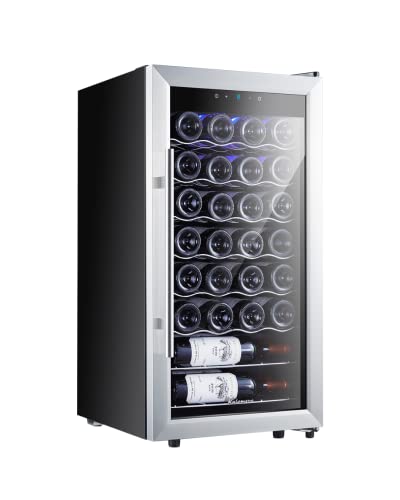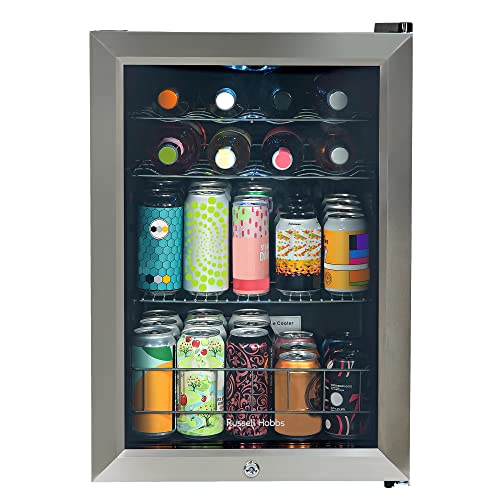10 Things That Your Family Taught You About Wine Chiller
페이지 정보

본문
 How to Properly Maintain a Wine Chimer
How to Properly Maintain a Wine ChimerWine chillers maintain red, white, and effervescent wine at the ideal temperature for serving. These special refrigerators are typically constructed to hold higher temperatures than standard fridges and also prevent unwanted vibrations from damaging the aging process.
 A wine chiller is also useful for picnics and parties, as it can quickly bring a bottle to the perfect temperature for serving. These devices are available in various finishes that include stainless steel and black.
A wine chiller is also useful for picnics and parties, as it can quickly bring a bottle to the perfect temperature for serving. These devices are available in various finishes that include stainless steel and black.Steel made of stainless steel
Keeping your wine and champagne chilled to the perfect serving temperature is crucial for the enjoyment of your drink. Red wine should be served at temperatures ranging from 62 and 68 degrees, while white wines should be served between 50 and 55 degrees. These temperatures are necessary to preserve the flavor and to prevent loss of the wine.
A wine chiller can help to achieve this by reducing the bottle's temperature quickly. There are a myriad of types of wine coolers available on the market however a stainless steel one is usually the best option. The stainless steel is a sturdy material that provides long-lasting cooling. Double-walled insulation helps keep temperatures cold for a long period of time. Stainless steel is heat resistant, and it will not stain or rust.
This stainless steel wine cooler was designed to keep bottles of wine or champagne chilled for a few hours. The double-wall construction keeps out condensation, and the brushed finish adds to its elegant appearance. It is easy to use and doesn't require chilling prior to use. This is an excellent option for use in everyday life or dinner celebrations. It is available in a variety of sizes and can be personalized to add a special touch.
If you're looking for a simple and durable wine chiller look into this stainless steel model by Vinglace. It's a double-walled cooler that means it can keep your bottle of wine or champagne chilled for up to 4 hours. It's also light and easy to carry.
Unlike some wine buckets, this chiller doesn't need to be pre-chilled. It's vacuum-insulated and has a push-lock gasket to keep the bottle securely in place. It also features a non-slip base to ensure it stays on the table as you pour your wine.
A bottle cooler that is insulated by vacuum keeps your wine or champagne at the perfect serving temperature, without the mess of melting ice cubes. Place it in the refrigerator for one hour prior to serving, and its double-walled design keeps your champagne or wine chilled for a long time. It's a great choice for poolside drinks or picnics. Its lightweight design makes carrying it a breeze. It is also equipped with a carry bag for portability.
Thermostat
The thermostat in the wine fridge supplies power to the parts which regulate and regulate temperature. If it fails, the fridge can become too hot or cold. The replacement of the thermostat is fairly easy and can be done using only a few tools. Shut down the wine refrigerator and take out all bottles. Place them in a cool, dark area to stop them from becoming hot. Next, open the wine fridge and locate the existing thermostat, which is usually installed on the rear of the interior wall. Refer to the owner's guide for precise placement. Take out shelves and racks that interfere with the thermostat. Clean the interior of the wine fridge kitchen fridge using a damp cloth. Then, move shelves and racks. Replace the thermostat.
If your wine cooler is making noises, it is possible that the cooling fan is malfunctioning. It could be loose or clogged up with dirt, or it might not be functioning correctly. If you suspect this, examine the fan connectors to ensure they are properly connected and If possible, clean the fan with sponge or a soft cloth. If the problem persists it is possible that the fan needs to be replaced.
Temperature fluctuations are another frequent problem with chillers for wine. This is caused by a change of the ambient temperature. The thermoelectric system could overwork and use more energy. If this is the situation it is possible to move the cooler into a cooler area or increase the air conditioning in your home.
The compressor wine cooler is similar to a household fridge, but it utilizes liquid refrigeration instead of water. This system can reach very low temperatures, and it can also be used for storing food items and other beverages. It is more expensive and requires regular maintenance as opposed to a thermoelectric cooler.
Thermoelectric coolers are quieter and more durable than traditional wine refrigerators. They also have fewer moving parts and no circulating liquid. They are smaller than a conventional fridge and can be stored in tight spaces.
Temperature control
Wine coolers keep your bottles at the ideal temperature to preserve their taste quality, texture and flavor. They also regulate humidity, which is crucial for good wine storage. Humid environments are breeding grounds for mould, and can cause labels to peel away which can reduce the value of your freestanding wine refrigerator collection. Wine coolers keep your bottles in a dry and airy environment to prevent this from happening and keep the quality of your kitchen wine refrigerator.
When selecting a wine chiller, it's important to consider the type of wine you want to keep. Different wines require different temperatures to preserve and mature. White wines can be stored in higher temperatures than red wine, but the ideal temperature range for white wines is 58 to 65 degrees Fahrenheit. You can store your wine properly by using a wine cooler that allows you to choose a certain temperature.
Another factor to consider when choosing a wine chiller (Continue) is the amount of space available for storage. Some wine refrigerators come with racks that can be adjusted to accommodate different sizes of bottles. There are models that have an open drawer that can be pulled out for additional storage space. A lot of wine coolers come with elegant door frames and finishes that complement the decor of your home. Some models even come with a built-in lock to prevent the unintentional opening and closing the fridge, which can alter the temperature of your wine.
If you're seeking a wine cooler with a sleek design and modern appeal then look no further than Vinotemp IL-OW002. This stylish thermoelectric solid-state chiller is quiet and has stylish internal lighting. Its elegant, spacious design can be used with most 750ml wine bottles. The robust construction ensures that your bottle is held upright. It also comes with a built-in bottle opener and an a glass rack to display your most loved bottles.
CellarPro Air Handler Split Outdoor is a fully ducted cooling system for cellars that includes an internal humidifier. It also comes with a climate control and temperature adjustment. The split design allows the condenser to be placed outside and the evaporator inside, which reduces the heat and noise. This helps save energy. Its high-output compressor and flexible fan cycles deliver the most efficient cooling power, and the commercial-grade Electrofin coating on the evaporator coils stops corrosion and leaks.
Energy efficiency
When looking for wine coolers, energy efficiency is an important factor to consider. The most efficient models are built in wine fridge to cut down on energy consumption, without sacrificing wine storage. They use less energy than other appliances, and they can also reduce the amount of air that is absorbed, reducing the energy cost. These models are constructed with premium components and materials that are able to be used frequently and last a longevity for a long time.
The temperature control system is one of the most important factors that determine the energy efficiency. Some wine coolers use thermoelectric technology. This makes use of a small blower to remove heat from the container. This type of technology is perfect for wine coolers that can store small quantities, like 20 or 30 bottles. It can also store sparkling wine, as it does not alter the humidity of the wine.
Other wine refrigerators use compressor technology, which is similar to a home refrigerator. This system uses an internal thermostat to monitor temperature, which is then controlled by the compressor. This kind of wine refrigerator has a higher price tag than a thermoelectric model however, it consumes significantly less energy.
Wineries can cut down on their energy usage by implementing various strategies, including improving the thermal insulation and pre-cooling new products. They can also upgrade their chillers with those that have a higher EER and implement a sequenced cooling load-based control strategy. These strategies can allow wineries to save up to 75% of their costs during cooling cycles for cold stabilization.
An energy audit is another method to cut down on the amount of energy used by wineries. This will give a detailed picture on energy consumption, and pinpoint areas that can be improved. A winery can use an energy audit to find renewable energy opportunities and supply. This will reduce the overall carbon footprint.
To ensure the efficiency of a wine fridge, owners should keep it clean. This will prevent dust and debris from getting on the vents or coils which could affect performance. It is also important to ensure that there is sufficient airflow around the appliance in order to prevent excessive heat build-up.
- 이전글9 Things Your Parents Taught You About ADHD Adult Female Symptoms 24.12.28
- 다음글What NOT To Do During The Smart Vacuum Cleaner Industry 24.12.28
댓글목록
등록된 댓글이 없습니다.

